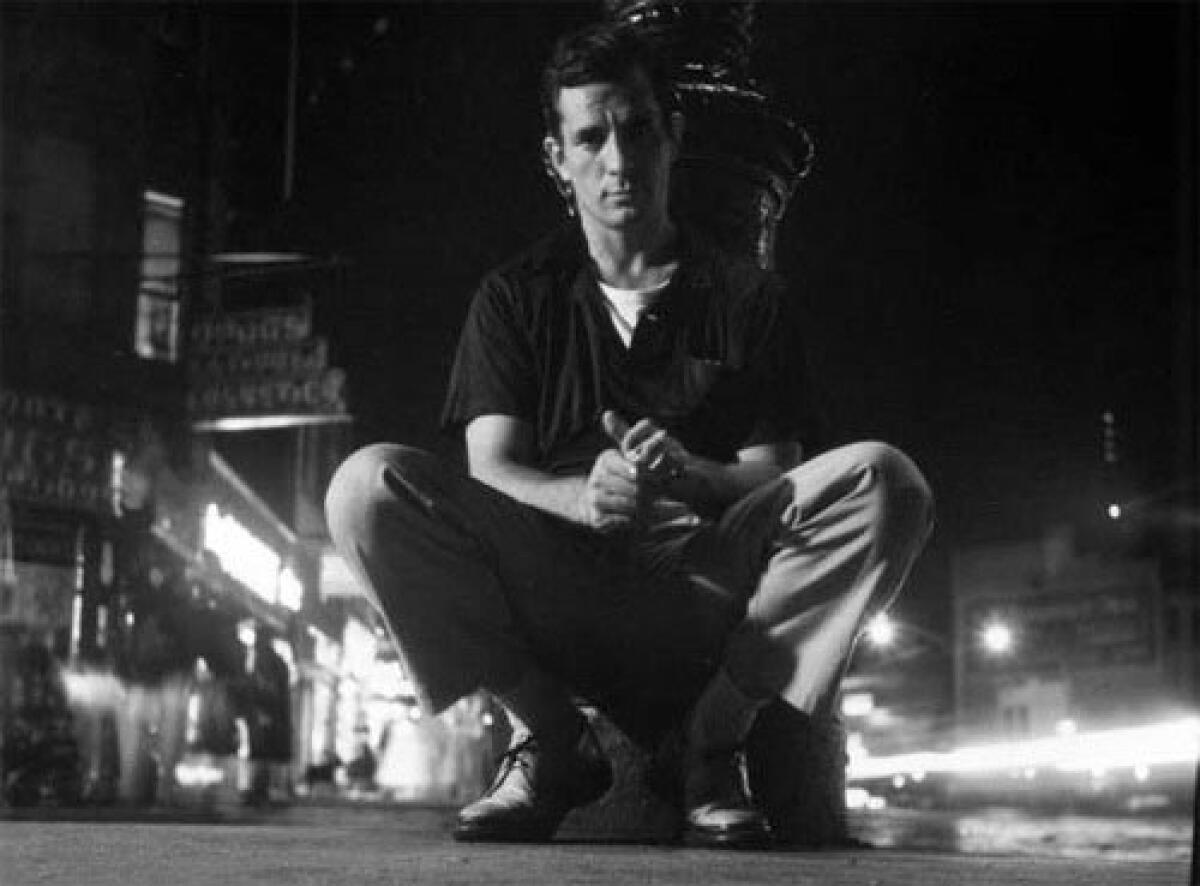Critic’s Notebook: Jack Kerouac’s ‘On the Road’ book app is a road trip and a map to the future

There’s a certain poetic justice in the fact that “On the Road” is one of Apple’s top-grossing book apps. Released on Saturday, the iPad app for Jack Kerouac’s landmark novel — featuring a variety of enriched content, including commentary, maps, audio recordings and other ephemera — hit No. 4 on Apple’s list on Tuesday, ahead of the Bible and T.S. Eliot’s “The Waste Land.” That’s a testament to the power of the digital project, but also to the novel, which has occupied a visionary place in the culture since it was first published in 1957. (The novel has been adapted for a new movie directed by Walter Salles and starring Sam Riley, Garrett Hedlund and Kristen Stewart.)
The decision to bring out “On the Road” as an app has a lot to do with this iconic status, explains Stephen Morrison, editor in chief of Penguin Books, reached this week by phone at his Manhattan office. “We were looking for a book with enough resonance,” Morrison says, “as well as enough supplemental material from which we could learn how to curate a literary app.”
The key word there is “learn,” which is what all of us, publishers and writers and readers, must do now as the publishing industry increasingly comes to terms with the digital age. We need to learn how to use the digital space as a vessel, as a container, how to produce and interact with apps and electronic texts that feel like books, yet also reflect the possibilities of technology.
“On the Road” aspires to all of this, functioning both as an e-book and also as a source of ancillary information. Open the app, and you’ll find a home screen with several subject areas: “The Book,” “The Author,” “The Trip,” “Publication” and “The Beats.”
The first, and most important, of these sections features the text of Kerouac’s novel, which has been designed to match the feel of a print book. “We were very conscious,” Morrison notes, “of page layouts. We wanted to see what would read the best, to make the technology enhance and not distract.”
To that end, there are no direct links in the novel, just light blue tabs on the left side of the page to signify the presence of notes. Touch one and a sidebar appears, featuring material on characters, locations, settings, historical details — bits of context that help to open up the book.
That’s part of the idea, Morrison points out, to reflect the fact that “we’re in a moment where everyone wants context; we’re constantly Googling this and that.” What sets the “On the Road” app apart, however, is that so much of the context it offers is exclusive, drawn from the archives of the publisher and from the Kerouac estate.
“On the Road” was first released by Viking, now a division of Penguin, and the publisher has released numerous editions of this and other Kerouac works over the last half-century. All that is reflected in the “Publication” section of the app, which features odd bits and pieces, including the original 1953 internal memorandum on the novel from editor Malcolm Cowley (“I think it is the great source document of life among the beat or hip generation,” he writes), as well as a letter from Pat McManus, Viking’s publicity director, to Kerouac, suggesting an article for Harper’s or the now defunct Saturday Review to help focus reader attention on the book.
This is great stuff — not least because it shows us that the more things change, the more they remain the same. McManus’ letter could have been written by any contemporary publicist, and Cowley’s enthusiasm is tempered by his concerns over the publishability of the novel, parts of which, he worries, “would get the book suppressed for obscenity.”
As if to highlight this, another section of the app compares passages from the original scroll manuscript with the finished book, highlighting just those sections (detailing drug use or graphic sexuality) that had to be scaled back. The result is a three-dimensional look at the novel as a function of process — not just its author’s process but also the process by which the book was edited and brought out.
When it comes to digital bells and whistles, “On the Road” is a little bookish: The only multimedia elements here are two short video clips, of Carolyn Cassady and Lawrence Ferlinghetti discussing Kerouac, and three audio clips of Kerouac reading from the novel. In a very real sense, though, that’s exactly as it should be, since we risk losing sight of what’s important the more enhanced content we insert into an app or e-book.
“All this is experimental now,” says Morrison. “But the book itself is the centerpiece. It’s where you start, and then everything flows off from there. As in publishing something that’s not technologically enabled, it’s the same challenge — to bring something you believe in out into the world.”
More to Read
Sign up for our Book Club newsletter
Get the latest news, events and more from the Los Angeles Times Book Club, and help us get L.A. reading and talking.
You may occasionally receive promotional content from the Los Angeles Times.







